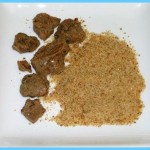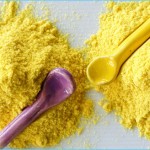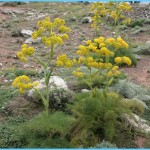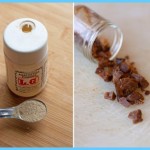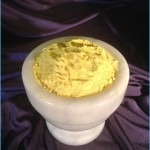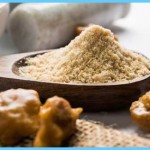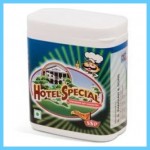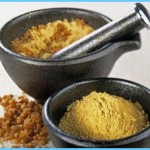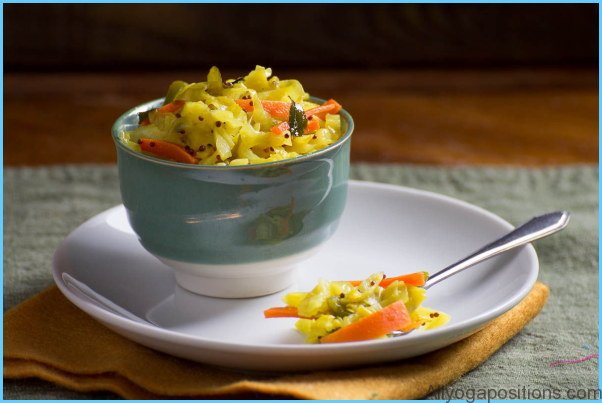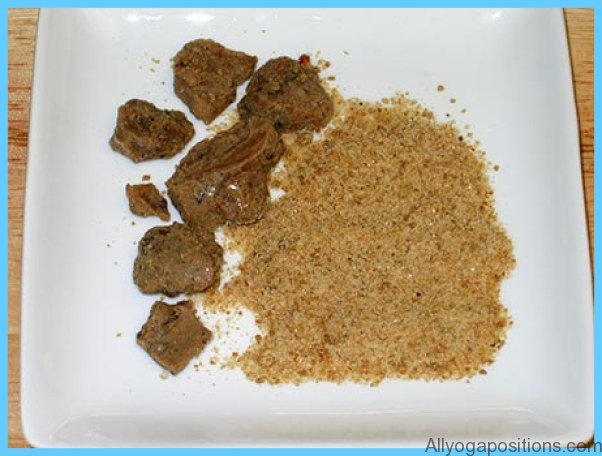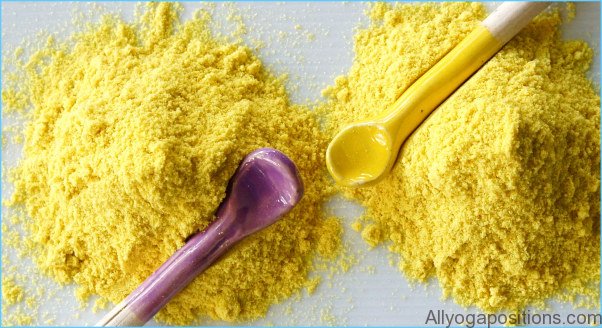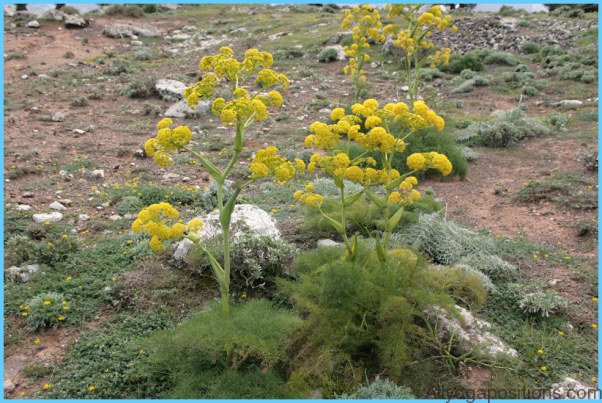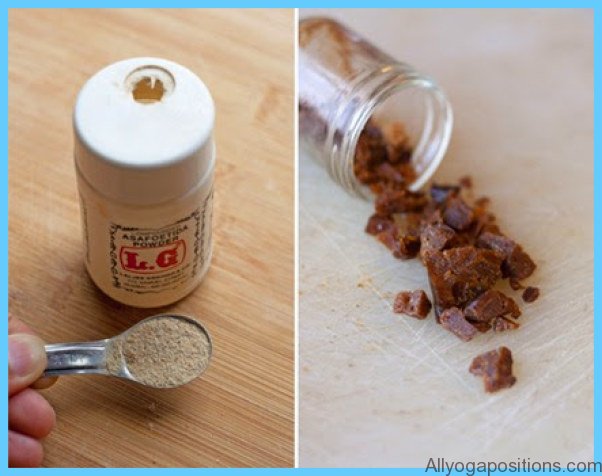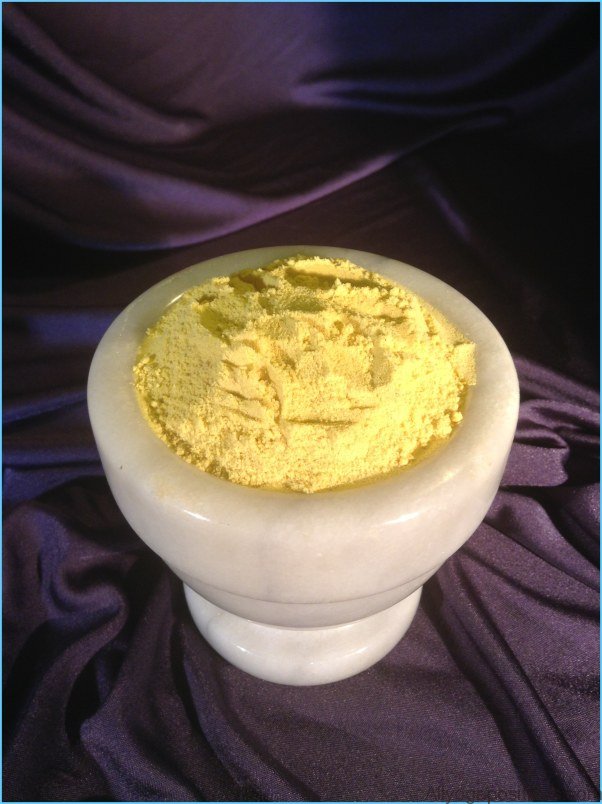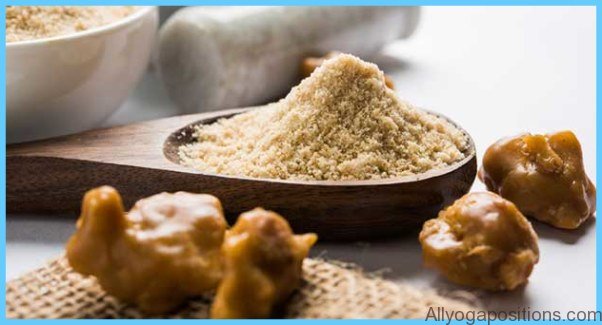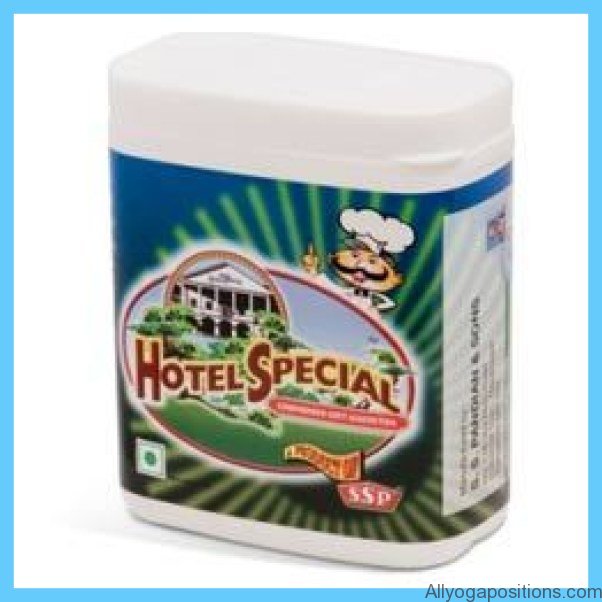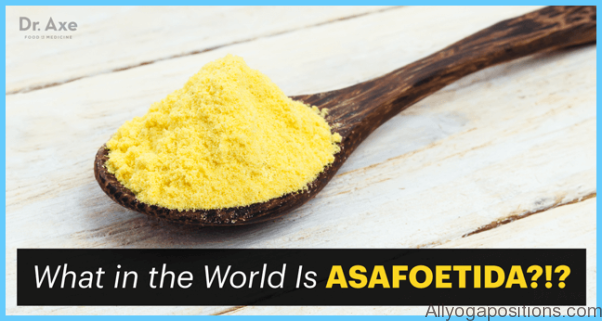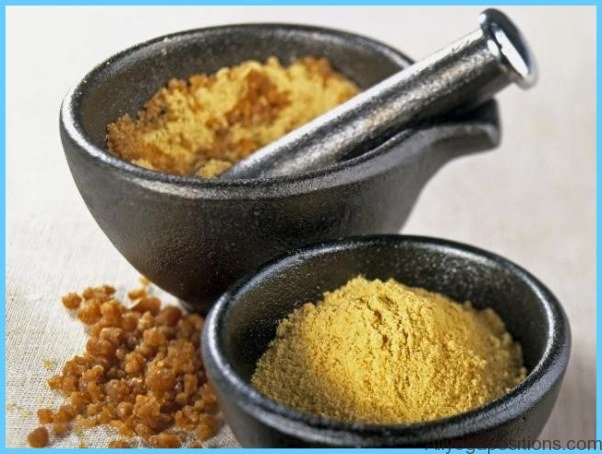Asafetida, Devil’s Dung, stinking Gum FR: Assa foetida, Ferule perisque GER: Stinkasant, Teufelsdreck IT: Assafetida SP: Asafetida
BOT: Ferula asafoetida, Asafoetida narthex FAM: Umbelliferae ILL: Plate 11, No. 6
This is an exceedingly interesting flavour when used in minute quantities. In bulk it has a quite ghastly stink, a little like bad garlic (due to the presence of smelly sulphur compounds). It was a favourite flavouring in Roman times when, under the name of silphium, laserpitium or laser, it entered into many recipes. The best was said to come from a plant which then grew plentifully in Cyrenaica. This plant was so important that it was even depicted on coins, but it was already extinct by Pliny’s time and has never been certainly identified. An inferior type of silphium then came from Persia and Armenia, and this is almost certainly what today we call asafoetida. That the Cyrenaican type was similar is only a reasonable conjecture.
Asafoetida is derived from several species of the genus Ferula – the giant fennels – of which there are some fifty in southern Europe, western Asia and North Africa (some are poisonous). They are closely related to the hog fennels, but are not to be confused with garden fennel though of rather similar appearance.
What is Asafoetida? How to Use Asafoetida Photo Gallery
Ferula asafoetida is a huge evil-smelling perennial, with yellow flowers, growing from six to twelve feet high. A smaller species, also a source of asafoetida, is Ferula narthex which reaches only eight feet. Both are native to Persia and Afghanistan, and sometimes make dense ‘forests’ in suitable situations. When the stems of these plants are cut to the root, a milky juice flows out which dries into the solid, resin-like mass which we know as asafoetida. When fresh it is pearly, but it darkens with keeping. The whole plant, incidentally, is locally used as a vegetable, and the centre of the large stem is regarded as a luxury. The common giant fennel (Ferula communis), grown as a foliage plant in gardens, is said to be poisonous.
Asafoetida can be bought in solid wax-like pieces or perhaps more conveniently as a powder from shops specializing in Indian spices. It can also be bought from druggists as an extract. Minute quantities of asafoetida can be used particularly with fresh and salted fish to which it gives a delicious flavour.
In the East this spice is more commonly used, and one will need it particularly in Indian recipes from Maharashtra and Gujarat – recipes for vegetables, pulses and pickles – though rarely if ever in North Indian cooking or with meat. In fact, it is part of the special magic which has enabled Indians to solve the problems involved in trying to create tasty vegetarian dishes.
Asafoetida is a much neglected flavouring in European cooking, though used sometimes in France. It should certainly be tried if one does not know it already.




